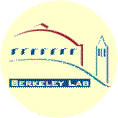December 17, 1998 |
|
 |
|
| Science magazine names Supernova Cosmology Project "Breakthrough of the Year"
Still images from the Supernova Cosmology Project website
Online supernova discovery movie clip
|
Contact: Paul Preuss,
(510) 486-6249, paul_preuss@lbl.gov BERKELEY, CA -- Astrophysicist Saul Perlmutter, leader of the Supernova Cosmology Project based at the U.S. Department of Energy's Lawrence Berkeley National Laboratory in Berkeley, Calif., today announced that his team has discovered a supernova that exploded almost 10 billion years ago, the oldest confirmed supernova ever found. Nicknamed Albinoni by its discoverers, it is also the most distant confirmed supernova, estimated to be some 18 billion light-years away. Its brightness may confirm previous findings by the Supernova Cosmology Project that the universe is expanding at an accelerating rate. Supernova Albinoni was found on the night of October 15, 1998 at the 10-meter Keck II Telescope on Mauna Kea, Hawaii, a telescope designed and engineered at Berkeley Lab. Supernova Cosmology Project team members used the group's method of comparing two sets of images of the deep sky to capture supernovae "on demand." In September, reference images had been made of distant galaxies in the northern constellation Pegasus; in October the same areas were imaged again. Albinoni had appeared in the meantime and revealed itself when the images were compared. "For our study of the expansion of the universe, we depend upon a special kind of supernova called type Ia," Perlmutter explains. "These are not only very bright, and thus visible at great distances, they also provide a precise standard of brightness wherever they occur. So we can use their apparent brightness to tell us how far away they are." On October 26, nine days after the supernova was first detected, both the Keck II Telescope and NASA's Hubble Space Telescope were trained on Albinoni and its home galaxy to obtain spectral color information, in order to identify the type of supernova it was and the redshift of its galaxy. "After our first 30-minute exposure, I noticed the spectral feature of a galaxy at redshift 1.2," says team member Greg Aldering -- which implied an object at an astonishing distance from Earth. To confirm the observation, additional hours of telescope time and several days of analysis of the weak spectrum were needed. "By the end of that week we had irrefutable proof that Albinoni was a type Ia supernova at redshift 1.2." Thereafter the researchers secured more observation time on both the Keck Telescope and the Hubble Space Telescope in order to glean additional information from its distant, weak light to be used in studies of the expansion of the universe. The Supernova Cosmology Project calculates the rate of this expansion by comparing the distance of type Ia supernovae, derived from their apparent brightness, with the redshifts of their home galaxies. After comparing values for many type Ia supernovae in nearby galaxies with more distant galaxies, the team announced in January of 1998 that the expansion of the universe is accelerating. In addition to showing that there is not enough mass in the universe for gravitation ever to stop the expansion, the discovery implied that an unknown property of space, called the cosmological constant and first proposed by Albert Einstein, is acting to expand space itself. This discovery was named by Science magazine as the "Breakthrough of the Year." Supernova Albinoni serves as the most distant point yet on the Supernova Cosmology Project's graph. Its redshift indicates that the universe is now at least 2.2 times bigger than when Albinoni exploded. By the Supernova Cosmology Project's best current model, Albinoni is almost 10 billion years in age and 18 billion light-years distant. Although supernovae are not formally named after famous people, the Supernova Cosmology Project found so many in 1998 that it became hard to distinguish among them on the basis of letter-number designations. Perlmutter and team member Robert Knop, both classical violinists, had the first crack at assigning nicknames and have named supernovae candidates after Bartok, Brahms, Elgar, Wagner, and even John Cage. But the most eminent superstar in this stellar collection is Albinoni, named after the 17th and 18th-century Venetian composer Tomaso Albinoni -- a star with a much classier moniker than its prosaic official catalogue number, SN1998eq. The Berkeley Lab is a U.S. Department of Energy national laboratory located in Berkeley, California. It conducts unclassified scientific research and is managed by the University of California.
|